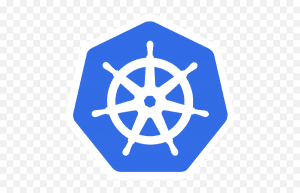Why use Helm for Kubernetes deployments?
Kubernetes is a powerful container orchestration tool that allows you to deploy and manage containerized applications at scale. However, the process of deploying and managing applications on Kubernetes can be complex and time-consuming, especially as the number of services and configurations grows.
Helm is a package manager for Kubernetes that simplifies the deployment of applications and services on Kubernetes. It allows you to define, install, and upgrade complex Kubernetes applications using pre-configured, reusable packages called charts. In this article, we’ll explore how Helm simplifies service deployment on Kubernetes.
What is Helm?
Helm is a tool for managing Kubernetes applications. It allows you to package, deploy, and manage Kubernetes applications in a simple and efficient way. Helm uses a concept called charts, which are packages that contain all the files necessary to create a Kubernetes application.
A chart includes a set of Kubernetes manifest files, along with templates that allow you to dynamically generate configuration files and deploy your application with specific configurations. Helm charts can be easily shared and reused, making it easier to manage Kubernetes applications across teams and organizations.
How does Helm simplify service deployment on Kubernetes?
- Packaging and Distribution
Helm makes it easy to package and distribute Kubernetes applications. With Helm, you can create charts that contain all the Kubernetes manifest files and configurations required to deploy an application. Charts can be shared across teams and organizations, allowing for easy distribution of Kubernetes applications.
- Configuration Management
One of the most significant benefits of Helm is its ability to manage configuration files for Kubernetes applications. Helm uses a templating engine that allows you to define and generate Kubernetes configuration files based on values specified in a values.yaml file. This enables you to manage and deploy multiple instances of the same application with different configurations, which is essential for managing applications in different environments.
- Dependency Management
Helm allows you to manage dependencies between different Kubernetes applications. Charts can define dependencies on other charts, allowing you to easily deploy and manage complex applications composed of multiple services.
- Upgrades and Rollbacks
Helm makes it easy to upgrade and rollback Kubernetes applications. Helm tracks the history of application upgrades and rollbacks, allowing you to easily revert to a previous version of an application if an upgrade fails or causes issues.
- Collaboration
Helm makes it easy for teams to collaborate on Kubernetes applications. Helm charts can be shared across teams, allowing developers and operations teams to work together on deploying and managing applications. Helm also supports role-based access control, allowing teams to control who can deploy and manage applications in a Kubernetes cluster.
Conclusion
Helm simplifies service deployment on Kubernetes by providing a package manager that allows you to package, deploy, and manage Kubernetes applications in a simple and efficient way. With Helm, you can easily manage configuration files, dependencies, upgrades, and rollbacks, making it easier to deploy and manage complex applications on Kubernetes.

